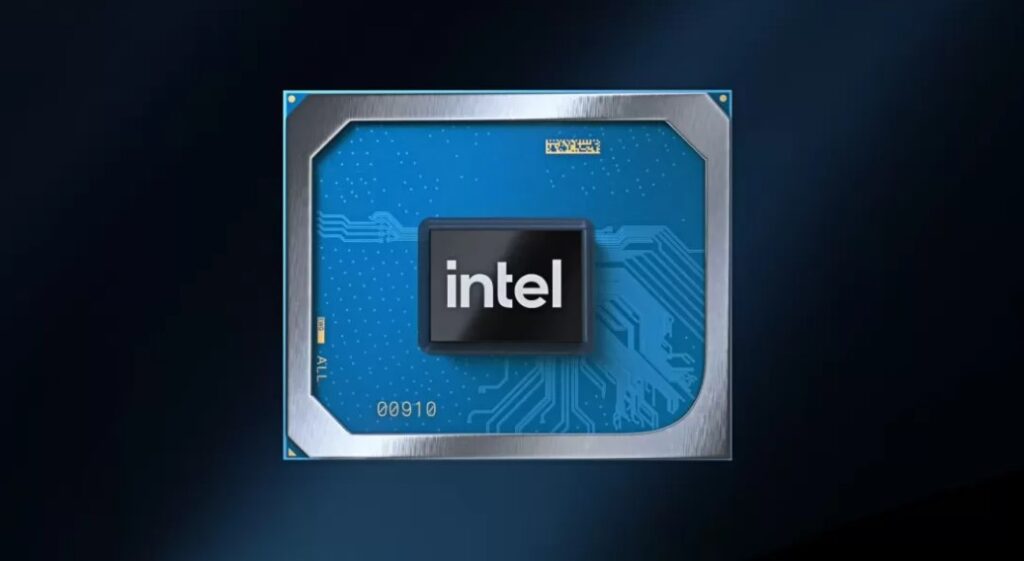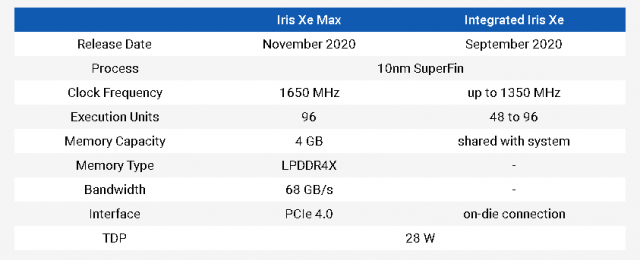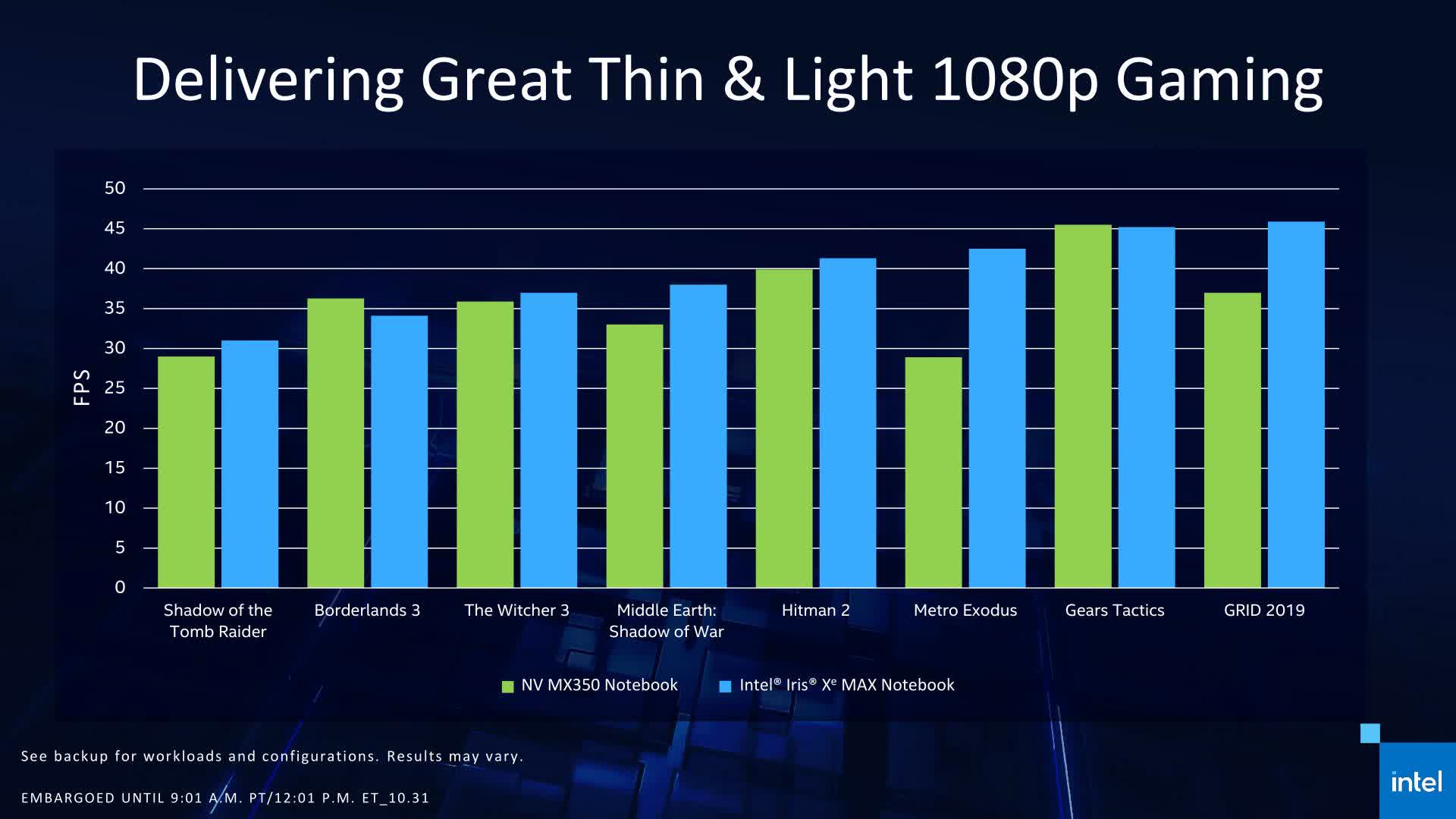
Something to look forward to: Intel has unveiled the Iris Xe Max, their first Xe discrete GPU. It’s designed for thin and light laptops and thus isn’t very powerful, but it does have one ace up its sleeve: it can share its workloads with the processor’s integrated GPU, combining their performance.
At this point, the Iris Xe Max is a familiar product. It is physically identical to the integrated graphics inside Intel’s newest mobile processors. However, on discrete form it comes clocked at 1650 MHz (instead of 1350 MHz) and it has 4 GB of dedicated VRAM.
The strength of the Xe Max is as a professional card, that is, in content creation applications where Intel’s workload sharing feature, called Deep Link, kicks in. It enables the processor’s integrated graphics to compute some of the workload’s straightforward components, freeing up the Xe Max for the hard stuff. Deep Link also modulates the system’s power delivery, to give both GPUs and the processor the optimal amount of power.

Intel claims that the combined GPUs can render AI workloads about seven times faster than the Nvidia MX350 can. Their combined encoding engines, running something called Hyper Encode, is reportedly 78% faster than an Nvidia RTX 2080 Super Max-Q.

The Xe Max is also a reasonably capable gaming GPU, even though Deep Link won’t work in games.
Intel claims that broadly, the Xe Max is equal or superior to the MX350 in popular titles. But be warned: neither GPU can run modern games above 1080p without big sacrifices in visual settings.

The Xe Max is available starting today, but hold out a little bit before buying one, because Intel is launching some bundles soon. As of now, there are three laptops confirmed to have the Xe Max: the Acer Swift 3x, the Asus VivoBook TP470, and the Dell Inspiron 15 7000 2 in 1. The Dell is already available at Best Buy, and the Asus and Acer will be on sale soon.

It’s exciting that Intel is ready to launch a new discrete GPU, but at the same time we wished it was something more powerful or available as a desktop card. To that end, Intel confirmed that a desktop equivalent will be launched in the first half of next year, and they reaffirmed their promise that high-end gaming GPUs will be “arriving in 2021.”




























